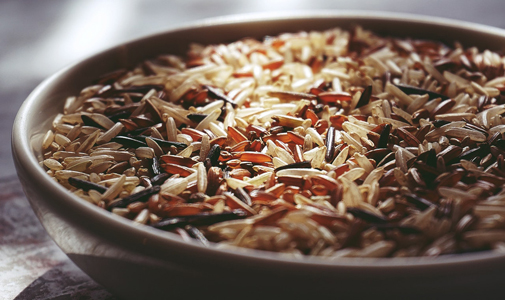Submitted by Administrator on Wed, 29/08/2018 - 16:45
The Carlsberg Foundation has awarded 19m DKK Professor Eske Willerslev from the GeoGenetics Group at Cambridge University and the Centre for GeoGenetics at the University of Copenhagen for this Semper Ardens project. The project will map the genome of past rice with the intention of identifying genes that can be used to make the rice of today stronger and more resilient.
 Rice is the world’s second-most important crop; yet every year, vast amounts of the harvest are lost due to disease and extreme weather. By identifying useful genes that can heighten the resilience to these circumstances in the current rice, it will be possible to make a focused effort to nurture these genes during the plant breeding process, hereby increasing the harvest, securing food supply, and fighting famine.
Rice is the world’s second-most important crop; yet every year, vast amounts of the harvest are lost due to disease and extreme weather. By identifying useful genes that can heighten the resilience to these circumstances in the current rice, it will be possible to make a focused effort to nurture these genes during the plant breeding process, hereby increasing the harvest, securing food supply, and fighting famine.
“By mapping the genome of cultivated rice through the last 10,000 years, it will be possible to find the genetic variants, which have been important to the survival and reproduction of rice during extreme climate changes and epidemics but have gone lost in the breeding of today’s strains. These genetic variants, then, can be introduced into current rice strains to make them more resistant to changes in the environment. Potentially, it could help fight hunger and increase food security all over the world,” says director for Centre for GeoGenetics, Eske Willerslev.
Regarding the grant, chairman of the Carlsberg Foundation, Professor Flemming Besenbacher, says: “Eske Willerslev and the researchers at the Centre for GeoGenetics have developed a powerful approach, which in great detail will tell us how the rice types of the past survived disease outbreaks or climatic changes through natural selection. The perspectives are far-reaching and will be able to help solve major global challenges.”
The research project arises from the discovery that Eske Willerslev made during his PhD-project, which was, that ancient DNA from plants and animals can be extracted directly from old sediments (environmental DNA). In addition to environmental DNA, the study will extract and sequence rice genomes from individual pollen grains.
Dr. Ana Prohaska, from the Department of Zoology, who is developing this novel method with Professor Willerslev, says:
“We will collect sediment cores from lakes in China, close to the areas where rice cultivation started approximately 10,000 years ago and extract the DNA of ancient rice from pollen grains preserved in these sediments. We will use pollen DNA along with eDNA to search for, now lost, genetic variants, which have previously granted rice resilience to pathogens and climatic extremes, e.g., long spells of drought. Following this, the best candidate variants will be introduced into modern rice strains. We will do this by incorporating the genetic variants directly into the modern rice genome and, afterwards, growing the modified rice plants in different controlled environments to identify the most well-qualified types.”
Professor Martin Jones, a co-investigator on the project and an expert in archaeobotany and archaeogenetics says:
"This is a really exciting opportunity to bring together Eske WIllerslev's world leading group on sedimentary ancient DNA with one of China's foremost quaternary science groups under Fahu Chen. Together, researchers from across the world will assemble a deep time genetic history of one of the world's leading crops, rice. The implications, both for understanding the past, and contributing to food science in the future, are immense."
